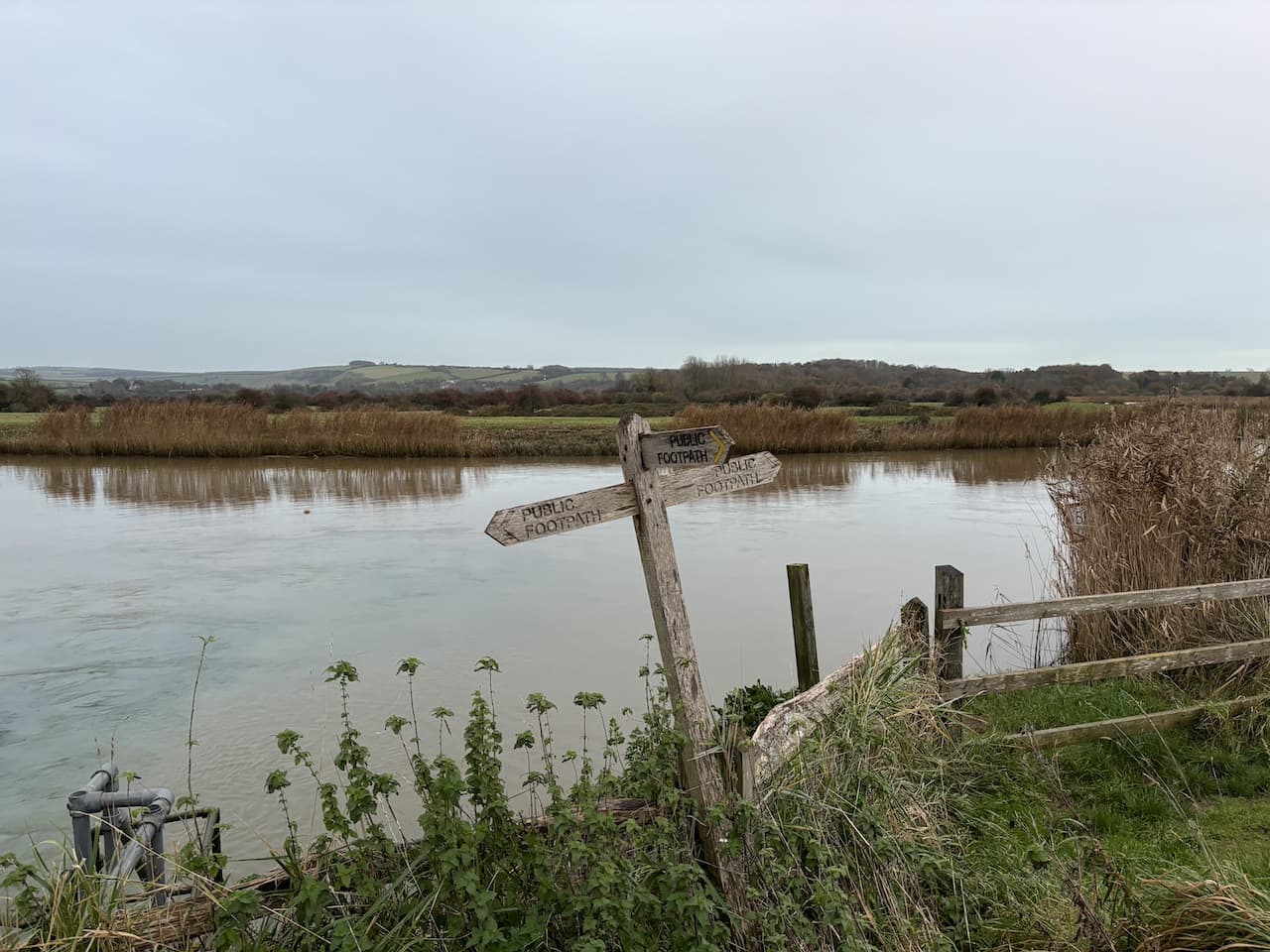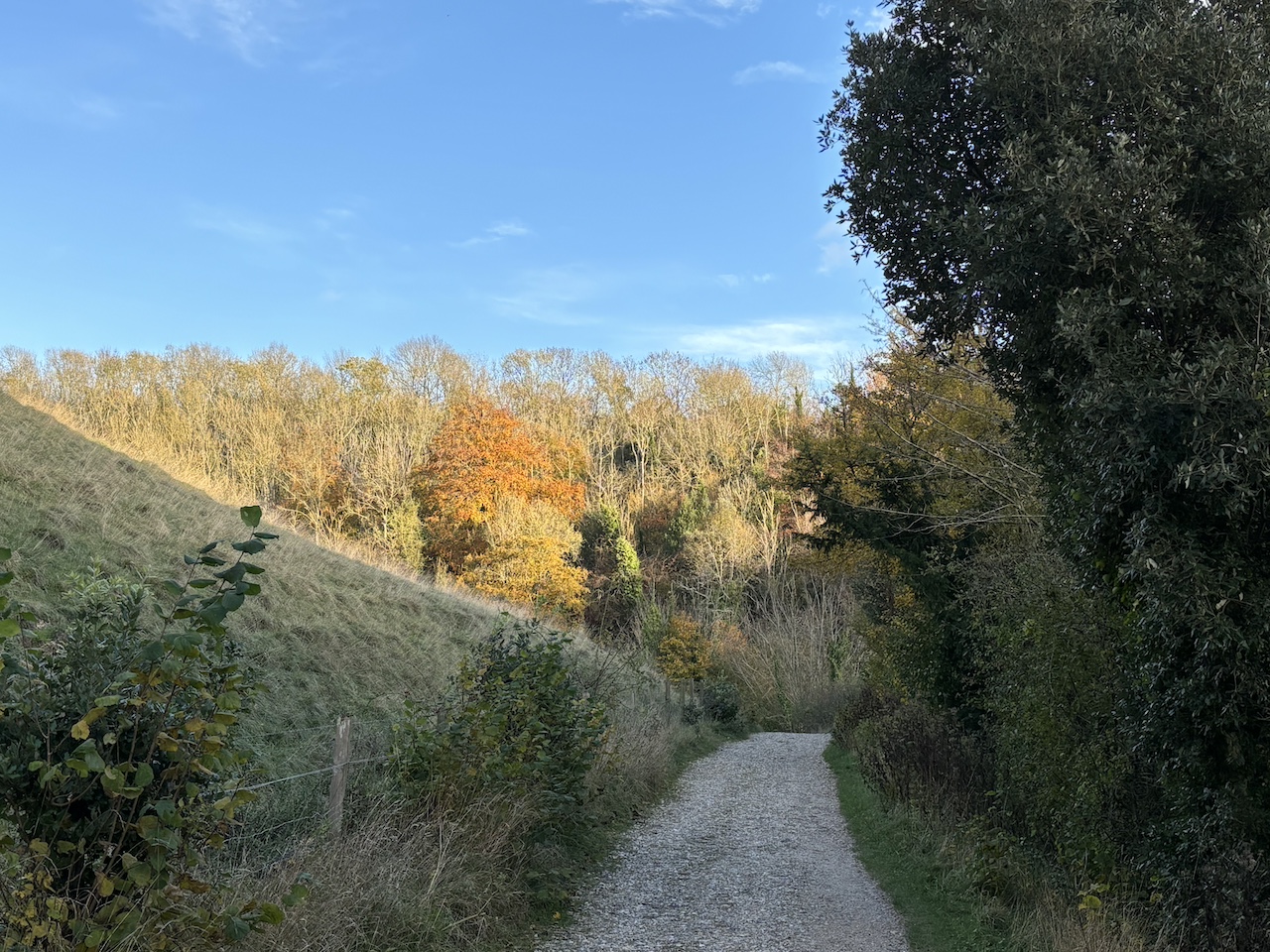A few days ago the weather forecast for today was persistent rain from dawn to dusk, but yesterday evening it improved to show the rain moving through by early afternoon, so I spend the morning catching up with a few things in the caravan and then head out after an early lunch.
With a only a few hours of daylight I decide to head to Arundel Park and have a bit of a jamabout. The starting point for my walk is the roadside car park in Mill Lane near to the Wildlife and Wetland Trust entrance. From the car park I walk downhill and go through the gate to enter Arundel Park beside Swanbourne Lake.

This lake is thought to have originated in the 11th century as a mill pond created by damming the steam created from chalk springs. For centuries it served as the water supply to the mill and more recently has become a recreational area.
I follow the path beside the lake passing a few walkers who have braved the morning rain and are looking bedraggled. I reach a gate and go through.

I stay in bottom of the valley and at a junction of paths turn to the left and gradually ascend a track.

Heading uphill I am treated to fine views back over the route I have walked so far.

I go through a gate and then take some steps on the right onto open ground where I head across to the Hiorne Tower. This was built in 1797 by Francis Hiorne who at the time was bidding to rebuild Arundel Castle for the Duke of Norfolk.

In front of the tower is a relic found in a museum at Sevastopol after the siege of Sevastopol in 1855. This siege was part of the Crimean War and Russian soldiers withdrew into the port which was the home of the Tsar’s Black Sea Fleet. Here they became besieged by the French, Ottoman and British allied forces. The battle that ensued lasted from October 1854 to September 1855.

I now walk across to a tarmac drive and turn right to go through a gate and head north.

After going through a gate I continue on the tarmac driveway and pass through an area of woodland.

I had hoped to leave the park at Duchess Lodge but when I get there the gates are locked so I decide to keep heading north towards Whiteways Lodge. There are extensive views onto the South Downs and the flooded fields around Amberley.

Nearing a junction of tracks I meet a fellow walker heading in the opposite direction. I enquire if I will be able to exit the park at Whiteways Lodge and he thinks it unlikely, but then suggests a route I could follow that would take me back to Arundel via South Stoke.
Always willing to heed the advice of locals I turn right at the junction of tracks and head beside Lonebeech Plantation.

After going through a gate I head across a field towards a gate in the distance and midway turn left on a footpath which is the route of the Monarch’s Way and head towards a gate. This was the path I followed yesterday towards the River Arun. After going through a kissing gate I follow a track downhill with views towards Houghton and Amberley.

The way-marked route descends through the edge of South Wood to reach a metal gate in the wall of Arundel Park, I turn right beside the river. Yesterday my path alongside the river was low lying, today’s path quickly rises a few feet away from the water.

After going through an area of woodland I pass through a gate to continue along the edge of a field.

The footpath skirts around cattle barns and then passes a fine old barn apparently built in the late 1800’s and now used as a wedding and events venue.

After the barn I turn left at a junction and follow a lane passing cottages to reach St Leonard’s church. This old church was built in the 11th century and serves the small community around South Stoke Farm.

From the church I continue on a track heading towards the River Arun and just before reaching the river go over a stile on the right to join a footpath by the river.

The footpath follows the embankment with the river to my left and goes over several stiles heading towards Offham Farm.

At a track leading to Offham Farm I pass a bridge and continue along the embankment and then go through a copse to emerge into the car park of the Black Rabbit pub. Apparently the building dates to 1894 and was built by the Duke of Norfolk. It is an unusual name for a pub and after walking by it yesterday I did an unsuccessful search on the internet to see why it was given this name.

The pub has a beer garden with a fine views along the river. It must be very popular in the summer.

I have two options here I can either walk along the road to the car park or take the route alongside the river. The light is fading but I should have enough time to take the longer route by the river. I follow the footpath along the embankment to a junction of footpaths where I turn right back towards Arundel.

The path goes besides the stream flowing from Swanbourne Lake. Across the fields I get a good view of Arundel Castle. This castle was originally built in the 11th century, it was damaged during the English Civil War and then restored in the 18th and 19th century.

At a footbridge I turn right joining the road to walk back to my starting point. The route was not what I planned when I set off but nevertheless has been a cracking walk covering 7.5 miles.
You can view this 7.5 mile walk on OS Maps and download the GPX File Here
To follow this walk you will need Ordnance Survey OS Explorer OL10 – Arundel & Pulborough
16th November 2023
© Two Dogs and an Awning (2023)
All information on this site is provided free of charge and in good faith and no liability is accepted in respect of damage, loss or injury which might result from it. To the best of my knowledge the routes are entirely on public rights of way or within areas that are open for public access.
Walking can be hazardous and is done entirely at your own risk. It is your responsibility to check your route and navigate using a map and compass.






























